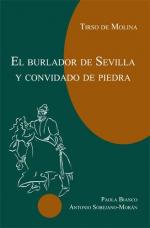|
This section contains 6,474 words (approx. 22 pages at 300 words per page) |

|
SOURCE: “Doubles in Hell: El Burlador de Sevilla Y Convidado de Piedra,” in Hispanic Review, Vol. 58, No. 3, Summer, 1990, pp. 361-77.
In the following essay, Arias examines why both Don Juan and the Commander perish in de Molina's El burlador de Sevilla, concluding that the violence committed by the Commander in the name of God is no more than Don Juan's violence committed in vain.
Tirso de Molina's El burlador de Sevilla y convidado de piedra (c. 1630) is a play with a deceptively simple happy ending. After sinning against society and against God throughout the four adventures that compose the dramatic action, Don Juan finally meets with his just fate in the flames of hell. In the closing scene, the King heralds the return to social order by ordaining the marriage of Don Juan's victims; the source of the community's problems, he proclaims, has been dealt his just punishment...
|
This section contains 6,474 words (approx. 22 pages at 300 words per page) |

|


